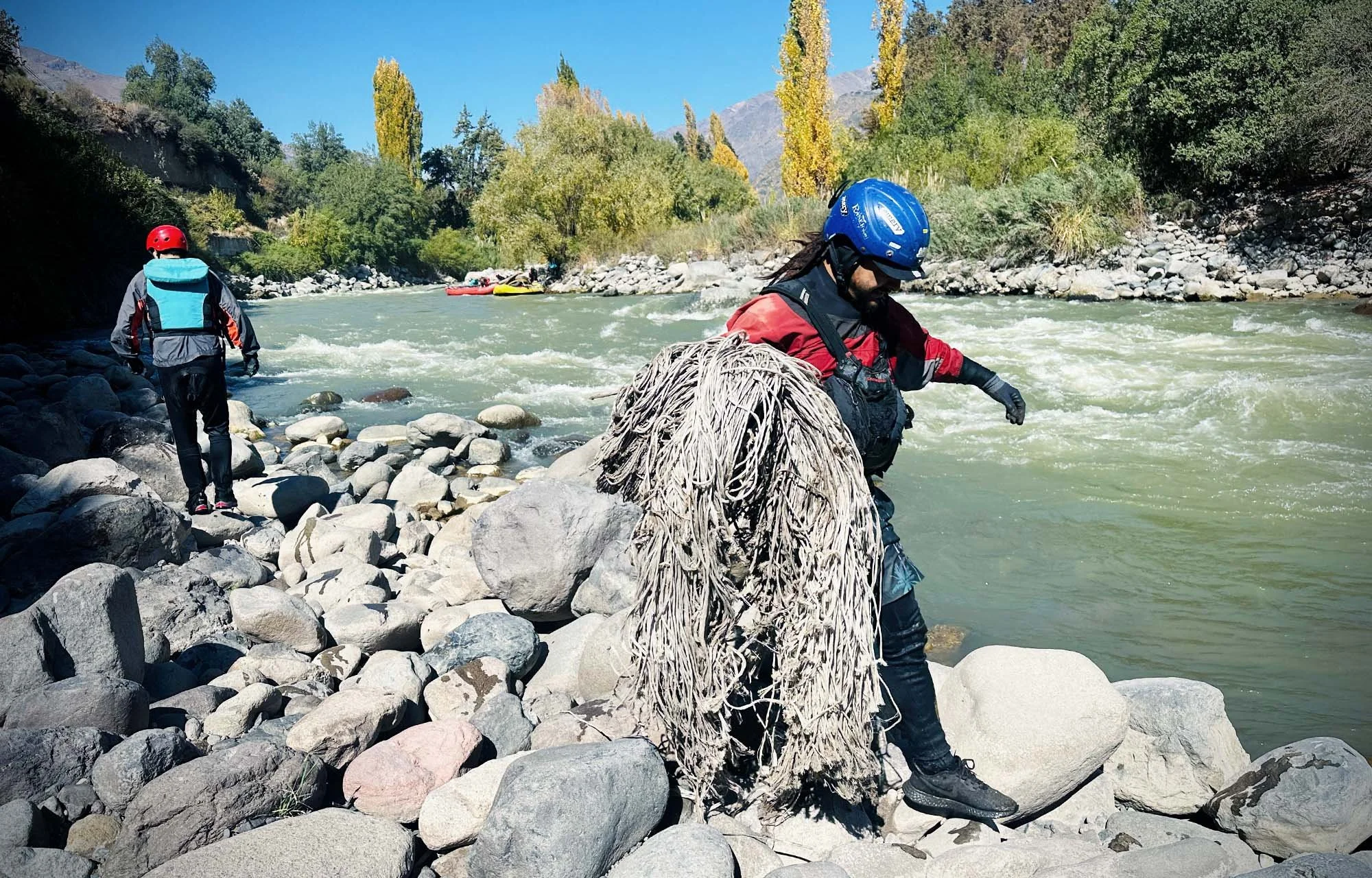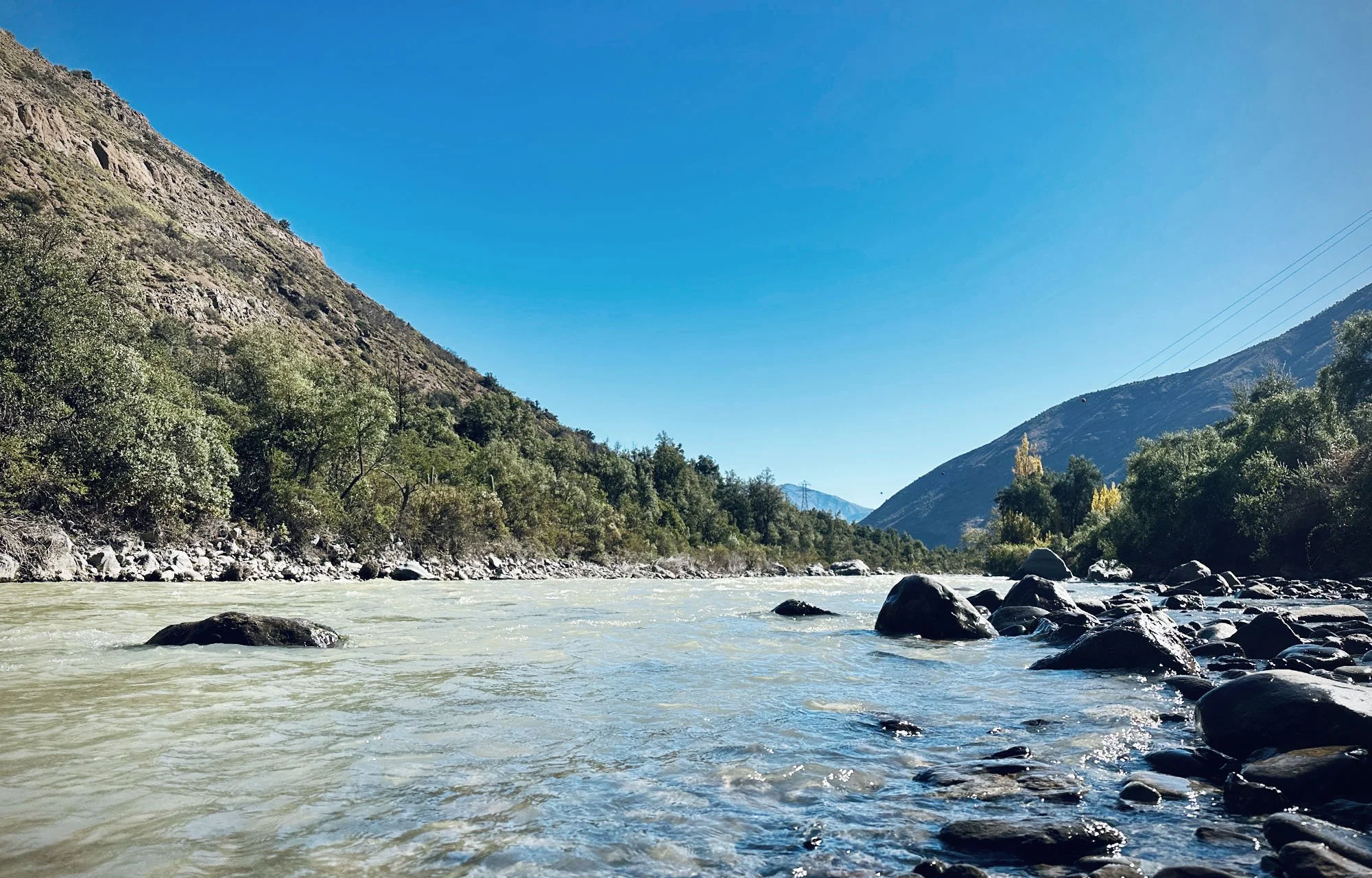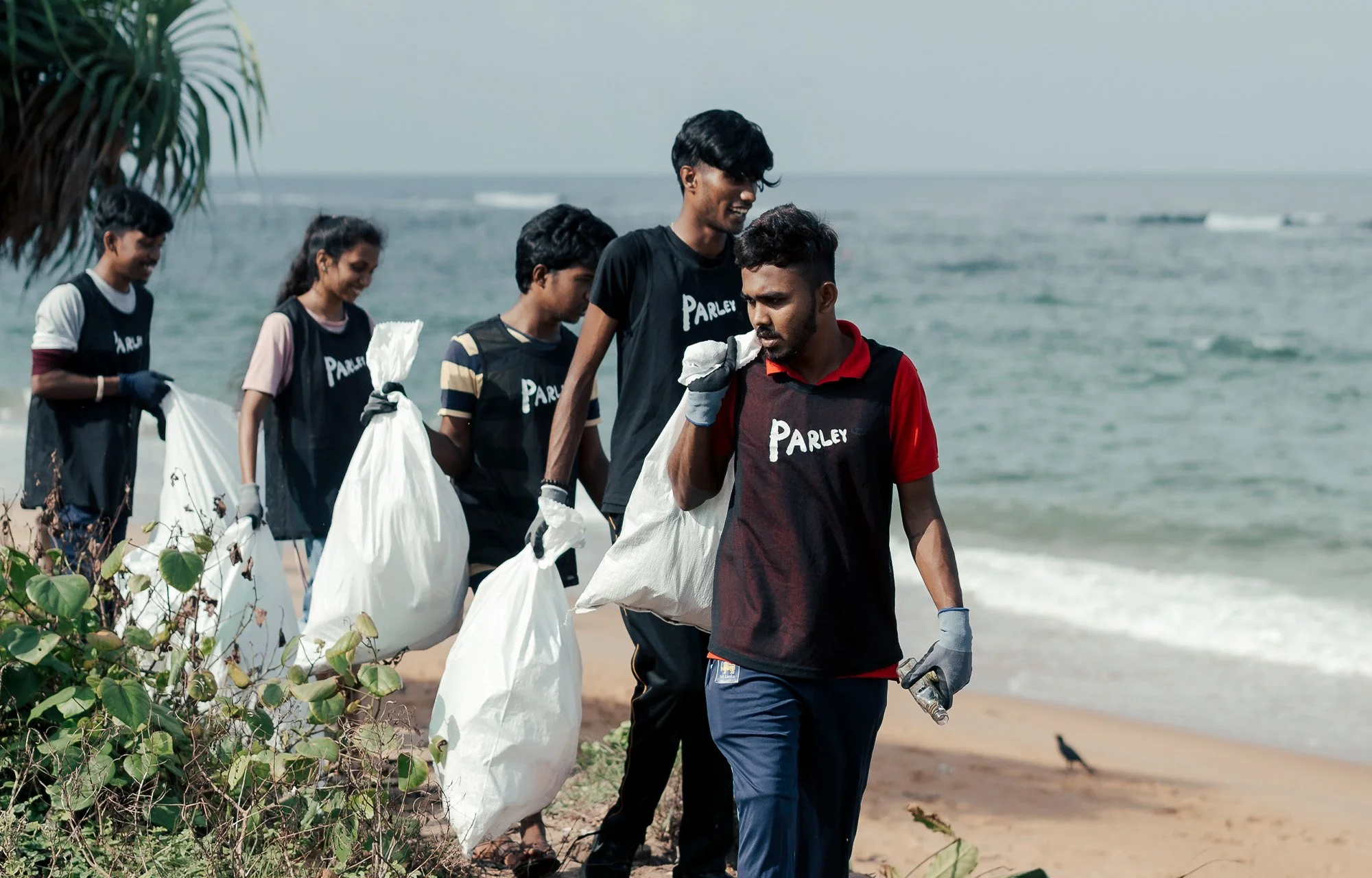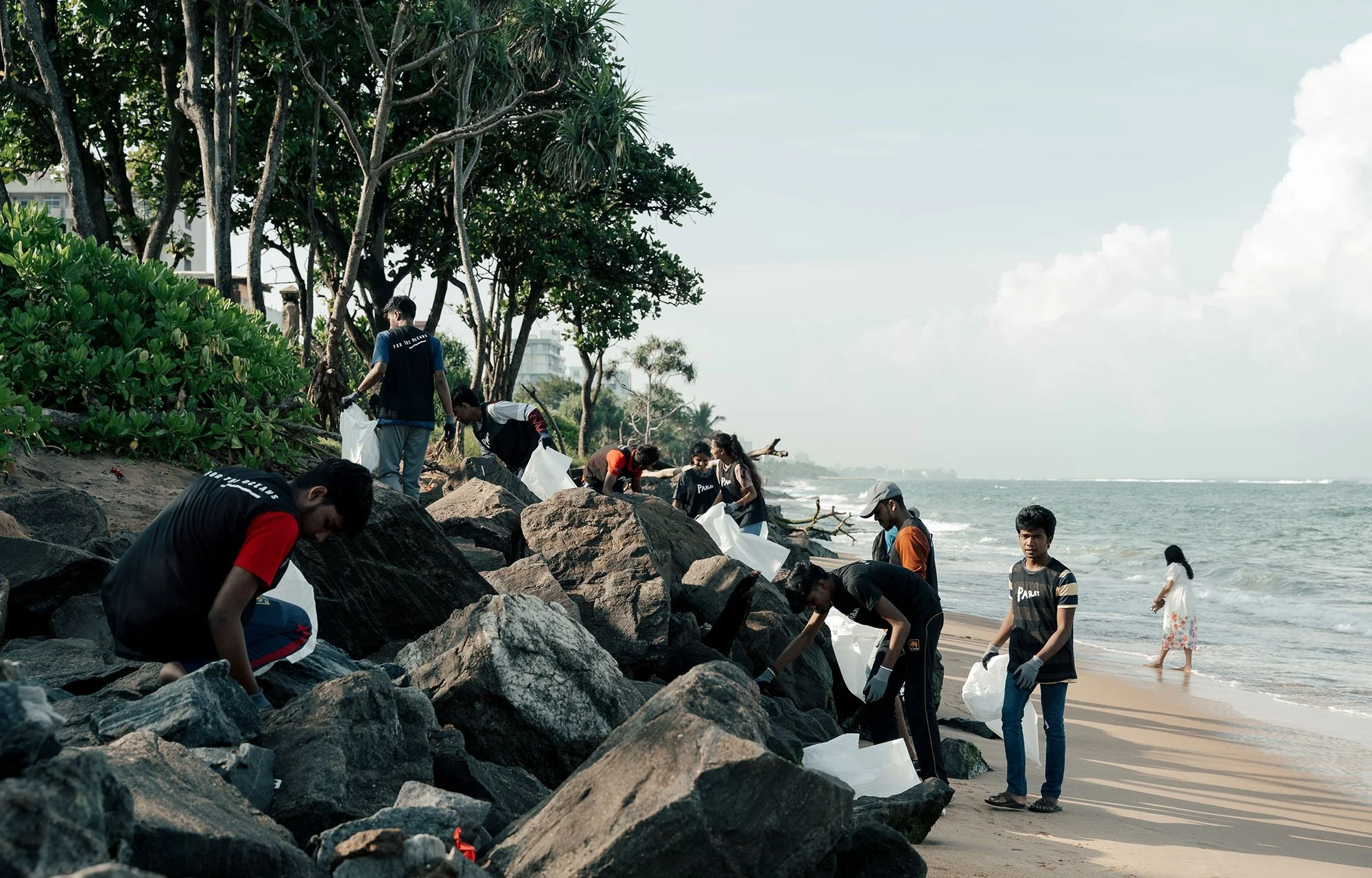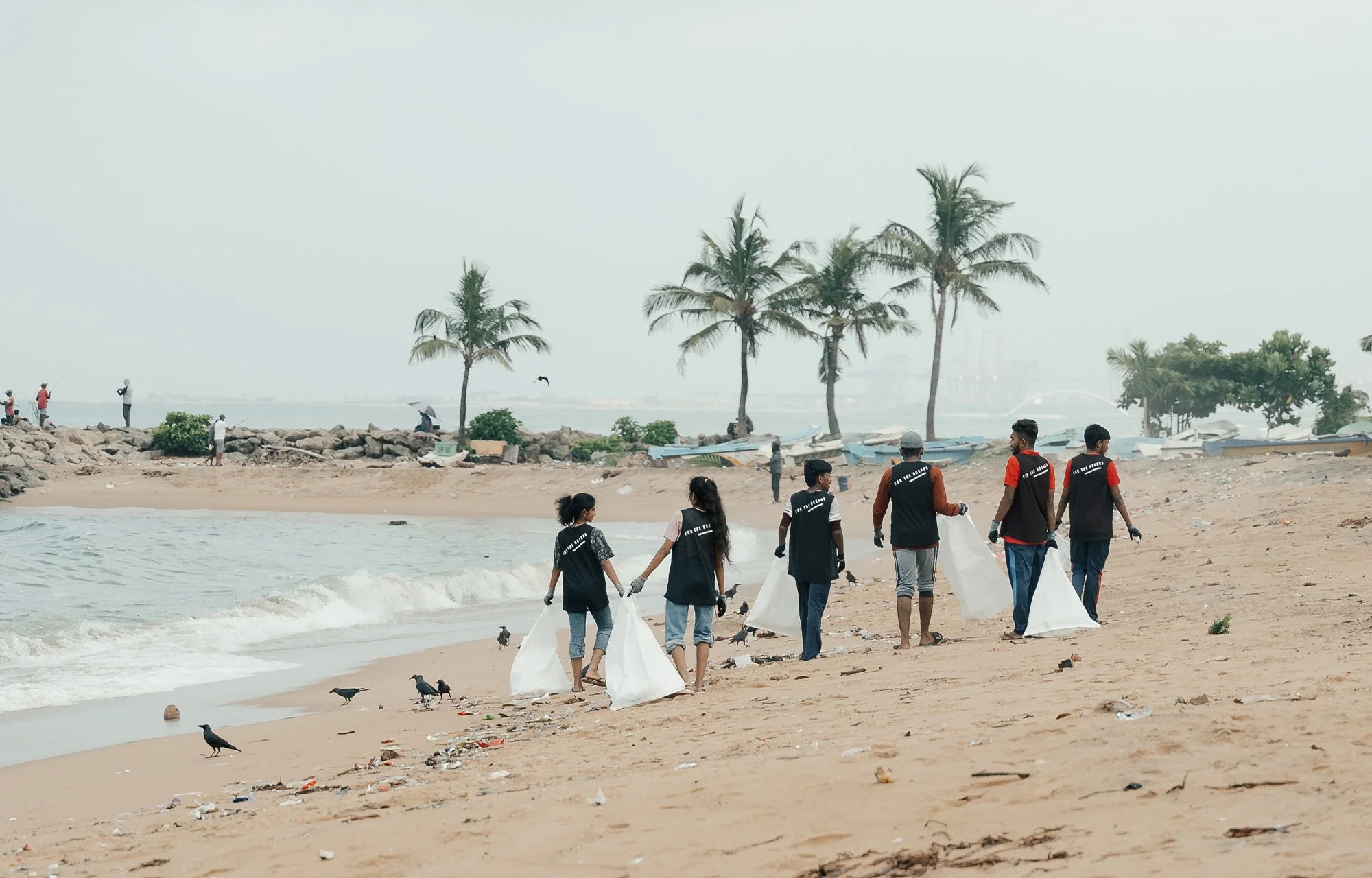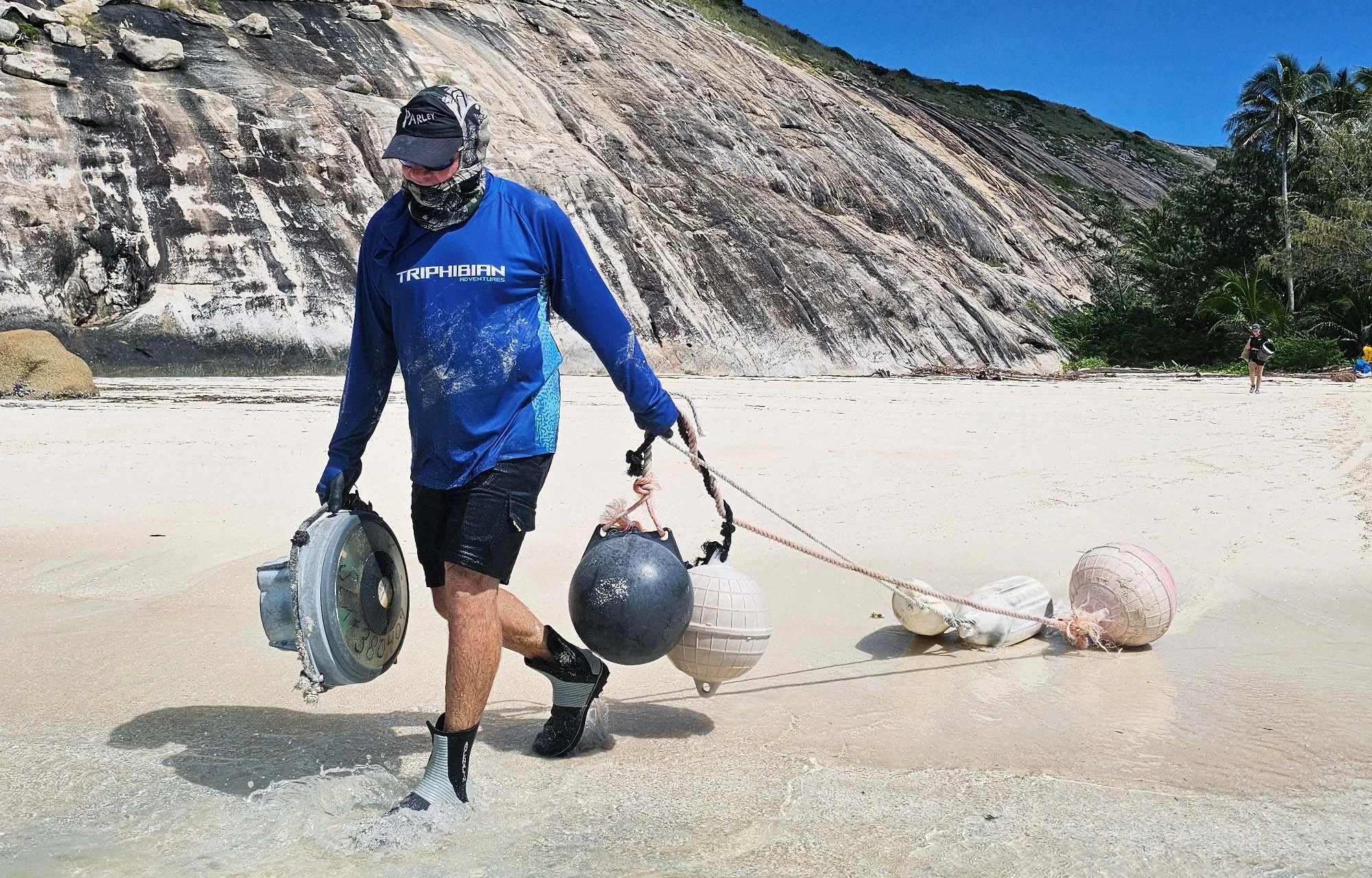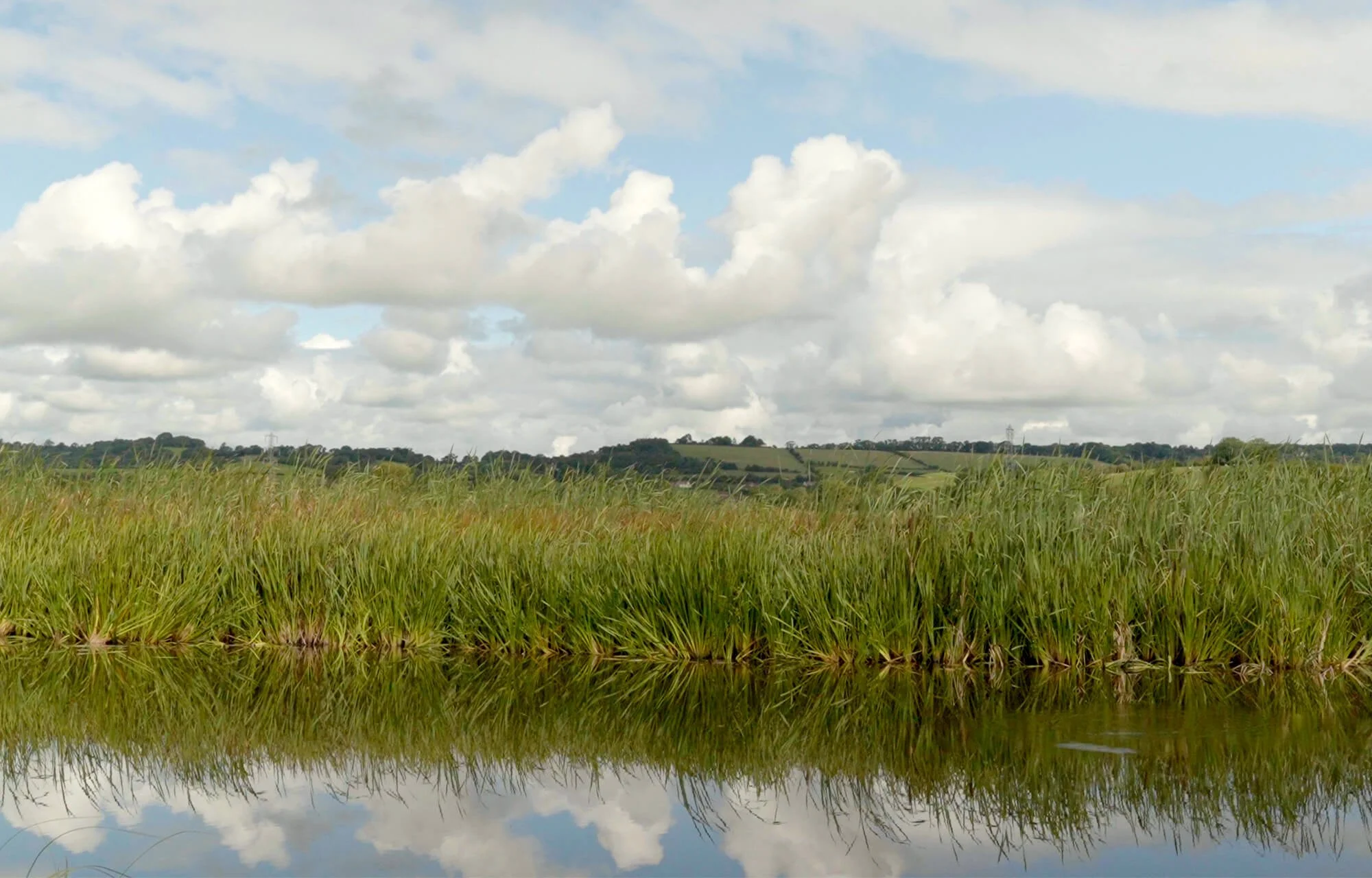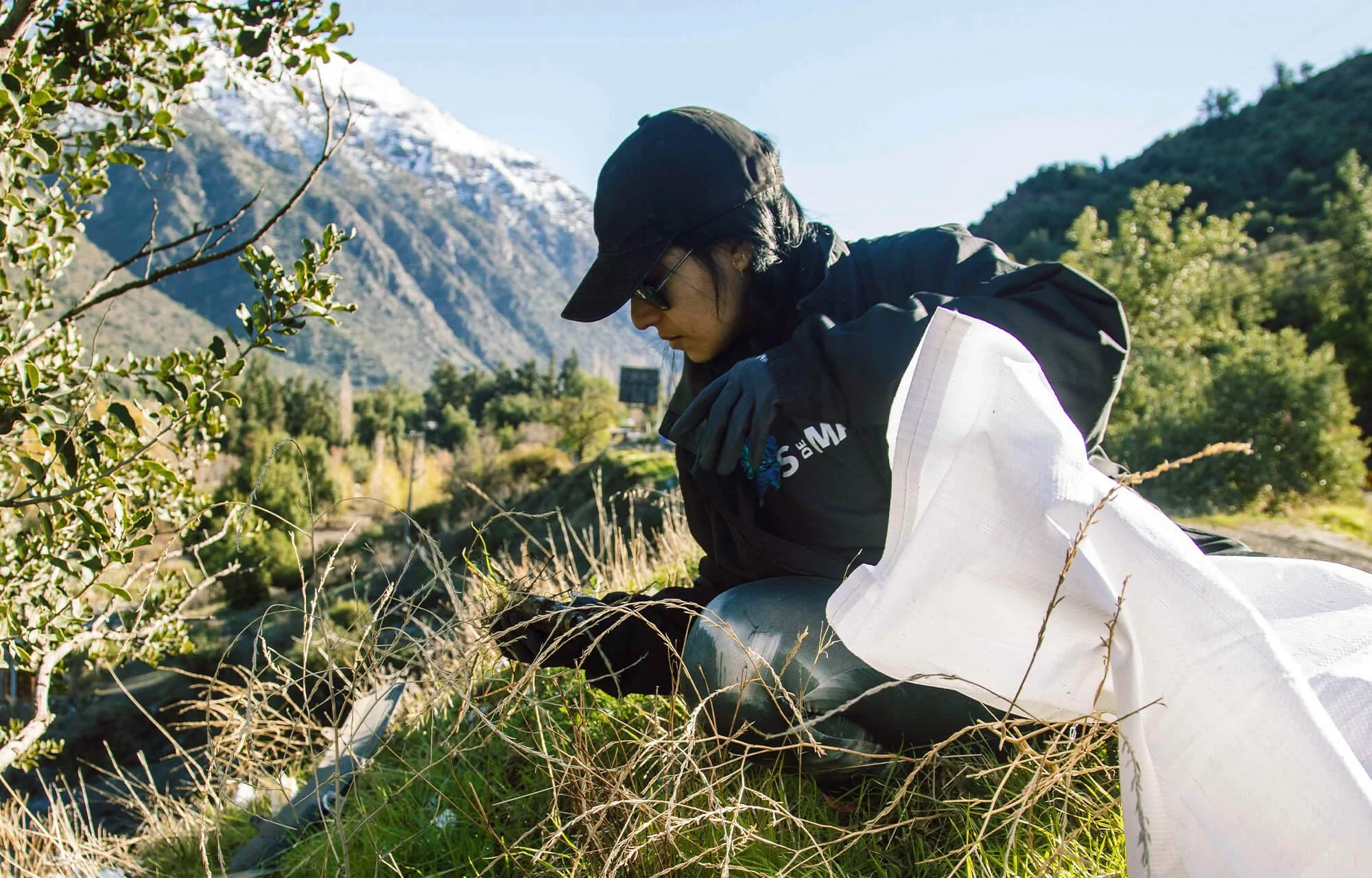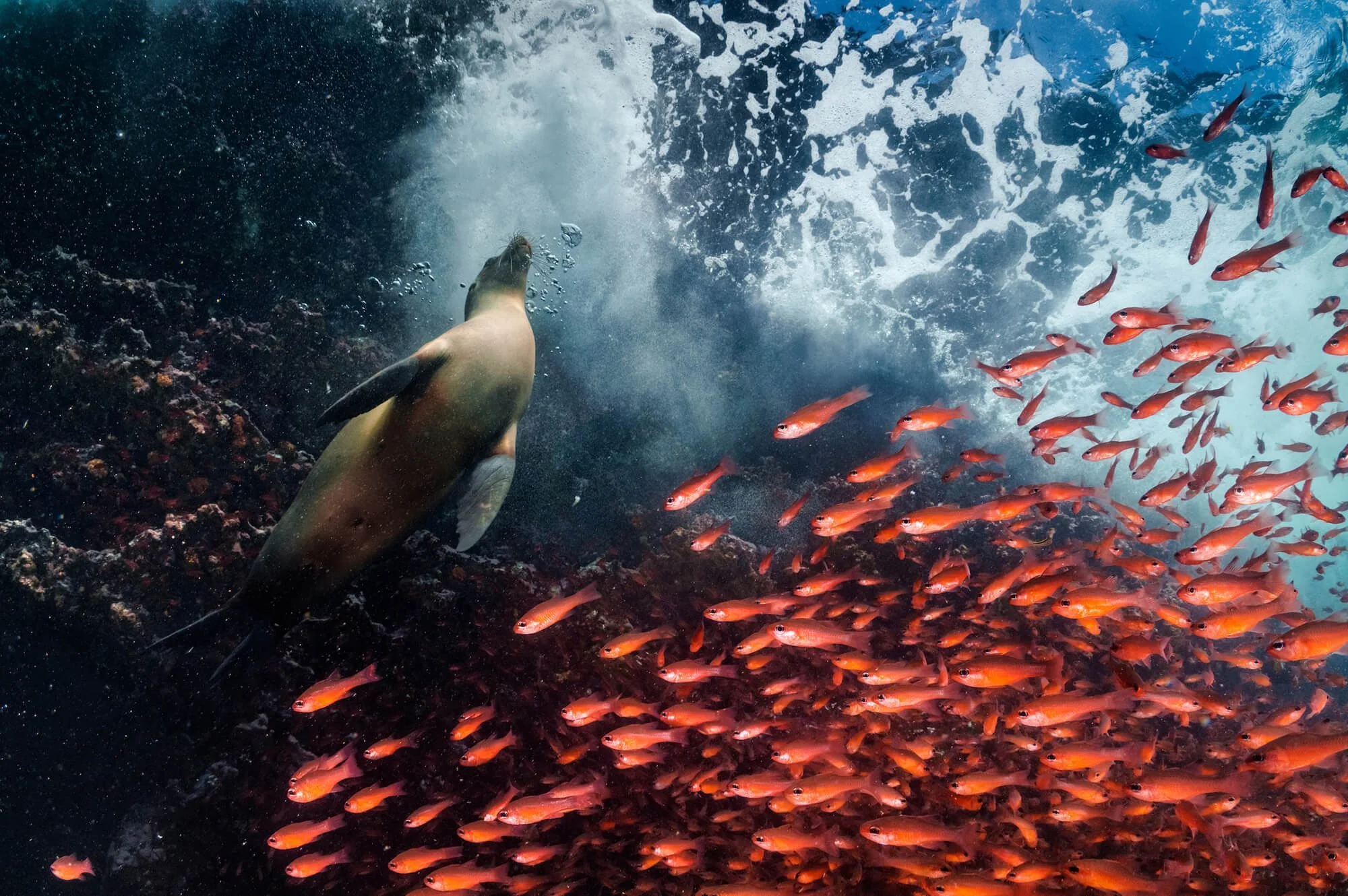FIELD NOTES
This month, we join a unique river raft cleanup in Chile, celebrate Earth Day in Sri Lanka and journey to the northern edge of the Great Barrier Reef in Australia
CHILE
USING RAFTS TO INTERCept over 1,200 kg of waste on the maipo river
The Maipo River is one of the most important waterways in central Chile, originating in the Andes Mountains and flowing more than 250 kilometers until it empties into the Pacific Ocean in the coastal town of Llolleo, San Antonio. Along its course, it crosses rural, urban, industrial and agricultural areas, carrying waste that, if not intercepted, ends up in the sea, seriously affecting coastal ecosystems. During a day full of collaborative action in a challenging environment, Parley Chile teamed up with local organizations like Somos Cuencas and the Pumara Rafting Club to intercept more than 1,200 kg of waste in a section of the river between El Melocotón and San José de Maipo, using river rafts to intercept and collect plastic waste.
During the day, more than 30 people embarked on a three-hour ecological expedition downriver that combined exercise, community work and love for the land and waters. The result was overwhelming: two full hoppers of waste, including plastics, metals and debris were removed thanks to the joint efforts of guides, athletes, volunteers and neighbors. For Ignacio Quesada, director of Deportex Magazine and kayaking instructor, the experience was eye-opening: “It was a beautiful run, but also tough because of the amount of waste we found. Activities like these demonstrate that we can engage in sports while simultaneously protecting what we love: clean, wild, and free waters.”
In 2024, Parley Chile surpassed its goal of 100 beach cleanups across the country, achieving a total of 128. By 2025, the challenge grows: “We want to focus more strongly on rivers and wetlands, understanding that much of the marine pollution begins inland,” says Rodrigo Farías, coordinator of Parley Chile. “The Maipo River, like many others in Chile, needs urgent attention and joint actions that allow us not only to clean it, but also to regenerate and care for it with a vision for the future.”
“Rivers have memory,” adds Liliana Plaza, project manager of rivers for Parley Chile. “With future rains, they reestablish their natural channels, carrying trash, debris and plastic waste downstream towards the ocean. These months are crucial for cleanups.”
SRI LANKA
AN EARTH DAY CLEANUP UNDER CHALLENGING CONDITIONS
Celebrating Earth Day was a bit challenging this year due to heavy rains, unusual for the start of the monsoon season, and the celebrations around the Tamil and Sinhala New Year between the 12th and 16th of April, when Sri Lanka comes to a complete standstill after the ceremonial overflowing of milk (a traditional way of marking the move into the new year).
Parley Sri Lanka still managed to gather some troops, coming back to the heavily polluted Wellawatte Beach in Colombo. Teaming up with the Sri Lanka Association for the Advancement of Science, 35 dedicated volunteers collected over 350 kilograms of waste within three hours – marking a new high score in recent years for per-person collection.
"It is sad to see Wellawatte being polluted time after time and no sustainable change happening," says Parley Sri Lanka's country manager Philip Zerr. "We hope to deploy river booms soon in the Colombo area to stop the flow of mismanaged waste in the oceans and on to our beaches. It is promising to see so many young people taking action and committing to a more conscious way of consumption and awareness towards coastline protection and ocean conservation."
AUSTRALIA
An expedition to the far northern fringes of the great barrier reef
Lizard Island, along with the smaller islands of Palfrey, South and Bird, forms the remote and breathtaking Lizard Island Group, located 250 km northeast of Cairns in the northern reaches of the Great Barrier Reef. Characterized by granite hills, picturesque white-sand beaches and crystal-clear lagoons fringed by vibrant coral reefs, the island group sits within the Lizard Island National Park and the Great Barrier Reef Marine Park.
Due to their position along the Southern Equatorial Current, the group’s southern and southeastern beaches are often affected by significant amounts of marine debris. Since 2019, Parley Australia has collaborated with the dedicated staff of the Lizard Island Resort to conduct regular cleanups, helping to protect the area’s fragile ecosystems and the diverse marine life that depends on them. During the most recent cleanup event, with invaluable support from both the resort and Lizard Island Research Station boats, as well as the dedication of 25 volunteers, the Parley Australia team successfully removed over 650 kg of marine debris from three remote beaches over three days. Among the debris collected were large shipping ropes, buoys, parts of fish-aggregating devices, plastic containers, PET bottles and numerous smaller plastic fragments tangled in the rocks and rubble.
One memorable day saw volunteers wading and snorkelling to shore when low tides made boat landings impossible – using a stand-up paddle board to ferry debris back to the boat. It was a rewarding way to cool off in 34°C heat, surrounded by the thriving marine life and spectacular reefs that make this part of the world so unique. On the final day of their expedition, the team were gifted with rare calm seas – perfect conditions to reach Coconut Beach. This remote stretch of coastline, tucked beneath steep cliffs and only reachable by abseil or boat, is a sanctuary for turtles, stingrays, sharks and coastal birds.
This cleanup was made possible thanks to the generous in-kind support from both the Lizard Island Resort and the Lizard Island Research Station. It highlights the positive impact that collective action can have in preserving one of the planet’s most precious and vulnerable ecosystems. Every piece of debris removed helps protect the reef, support marine biodiversity and maintain the natural beauty of this World Heritage-listed region.


